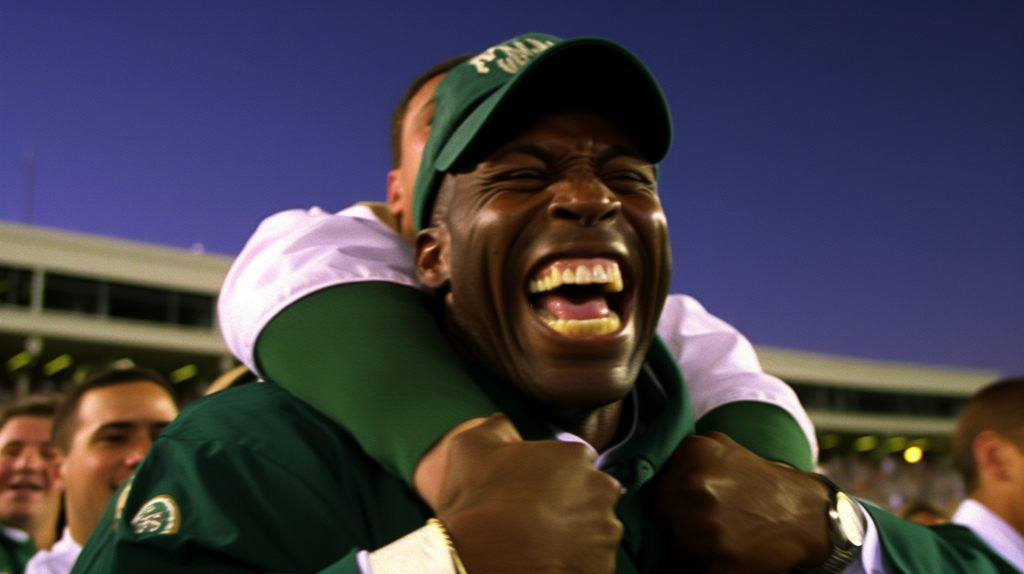🌺 No Mo’ Mo’ Sore: How fo’ Handle Post-Workout Pain
⬇️ Pidgin | ⬇️ ⬇️ English
Eh, you guys! You know how you stay feeling sore aftah you pau workout? Maybe was one mean spin class, lifting heavy at da gym, or even dancing all night long at one wedding. Whatevah da reason, da next day you all stiff and moving slow, yeah? 🏋️♂️💃
Da kine reason why our bodies get sore still stay one mystery, says Gene Shirokobrod, one physical therapist. Basically, da soreness comes from your muscles getting small kine damage and den get all inflamed. But no worry, it’s not like you did something wrong, or dat you not getting stronger. Most times, your body just needs time for recover on its own. But, if you no pay attention to da sore muscles and go hard again too soon, you could end up with something more serious.
Planny people spend big bucks trying for fix muscle soreness with all kine stuff like compression boots, massage guns, and ice tubs. Sure, dey make you feel bettah, but there’s a difference between just feeling good and really fixing da damaged muscles.
No need for spend all dat money or use fancy things for get back on your feet. Simple stuffs and thinking “inside out” goin’ help you avoid getting sore, recover da right way, and stay away from injury.
Use your fascia.
For long time, people thought soreness was from lactic acid building up in your muscles during exercise, but dat theory wen get thrown out in da 1980s.
Nowadays, get two ideas about why soreness happens. One theory is dat tiny tears in your muscle tissue cause soreness. But more recently, experts like Jan Wilke, a sports science professor, think maybe da soreness comes from irritated and inflamed fascia. So, when you warming up, good for think about moving your fascia around. Fascia, dis thick connective tissue, likes movement from all different directions.
Set yourself up for success.
Be real with yourself about where your fitness level stay at before you exercise, especially if you just starting or coming back aftah one break. No try jump back in where you left off long time ago.
Think about da minimum amount exercise you need for get fitter at first. Write down your plan or get one coach for help you make one, and stick to it. If you get sore, no push through it in your next workout. Dat’s when your muscles need time for recover and where real progress happens.
Eat and sleep well.
No mattah if you just starting to work out, coming back aftah one break, or you stay doing this for long time, you goin’ get sore now and den. Instead of trying for fix da pain from da outside, start from da inside. Get plenty studies showing good sleep and nutrition help prevent injury, including muscle soreness.
When you start feeling sore, or aftah one hard workout, think about eating more calories and protein, or getting some extra sleep. Dat’s going support your tissues and help you move forward.
Force yourself to get moving.
While it’s not good for go hard while you sore, doing low-intensity movement is helpful. Tings like easy walking, swimming gentle laps, or doing some light squats can get your blood flowing and help with recovery.
“If I stay feeling sore and tired aftah one intense workout, I go for one short, easy run da next day,” says Jamie Hershfang, 30, one ultrarunner from Chicago. “Dat always helps loosen up my muscles.”
Easing pain is not fixing muscle.
Try resist da urge for take things like ibuprofen. Some research shows it no really help or could even make things worse. “Da research shows dat NSAIDs will make you feel less sore, but dey actually slow down da healing,” says Jason Sawyer, director of the exercise and movement science program at Bryant University.
What about hot tubs, massages, Epsom salt baths, or hot/cold contrast baths? They no going cause harm, and you might feel bettah, but understand dat’s only sensory relief and no really affect da strained muscle or fascia itself. You might come out feeling less stiff and sore, but they no can reach da deeper tissue.
Be aware if it’s more than just soreness.
Sometimes, da pain aftah workout might actually be injury. If da pain stay in one spot, dat’s more likely one injury. Injuries usually hurt right away, while soreness takes time for show up.
If you think you might have one injury, take it easy and go see one medical practitioner.
When it comes to beating soreness, keeping things simple is da best. “Give your body what it needs for heal,” Dr. Sawyer says
, “and it will do da rest.”
So, there you go, gang! No need for go all out with expensive stuff. Just take care of your body, and it’ll take care of you. 🌺🏃♀️🍎💤
NOW IN ENGLISH
🌺 No More Sore: Managing Post-Workout Aches 🌺
Hey, folks! You know how after a tough workout, whether it’s a killer spin class or lifting heavy, or maybe even dancing all night at a wedding, you end up feeling stiff and sore the next day? 🏋️♂️💃
According to Gene Shirokobrod, a physical therapist, the reasons for our bodies getting sore are kind of a mystery. Basically, soreness is an inflammation response to tissue damage. But don’t worry, it doesn’t mean you’ve messed up or that you’re not getting fitter. Most times, your body just needs to heal by itself. However, if you ignore sore muscles and go hard again too soon, you risk a more serious injury.
The fitness industry is booming with products promising to reduce muscle soreness – from compression boots and massage guns to ice tubs. While many of these tools do provide temporary relief, there’s a big difference between feeling better and actual muscle repair.
The good news? You don’t need to spend a fortune or use fancy gadgets to recover. Simple methods and an “inside-out” approach can help you prevent soreness, recover properly, and avoid injuries.
Use your fascia.
There was a time when experts believed that soreness was due to lactic acid build-up in muscles during exercise, but this idea was largely debunked in the 1980s.
Now, there are two main theories on the cause of soreness. One says it’s due to tiny tears in muscle tissue. More recently, some experts, like Jan Wilke, a professor of sports science, believe soreness could be caused by irritated and inflamed fascia. Hence, incorporating fascia movements into your warm-up can make the tissue more resilient to the workout ahead.
Set yourself up for success.
Be realistic about your fitness level before exercising, especially if you’re just starting or returning after a break. Avoid jumping back into a routine where you left off months or years ago.
Consider what minimal exercise you need to get fitter initially. Write down your plan or have a coach create one, and stick to it. If you do get sore, avoid pushing through it in your next workout, as this hinders muscle recovery and increases injury risk.
Eat and sleep well.
Whether you’re a fitness newbie, returning after a hiatus, or a seasoned athlete, you’ll occasionally face soreness. Instead of tackling the pain externally with massage guns or ointments, start internally. Sufficient sleep and good nutrition play key roles in injury prevention, including muscle soreness.
At the onset of soreness, or after an intense workout, consider increasing your calorie and protein intake and getting extra sleep to support your tissues.
Force yourself to move.
While rigorous exercise is not advisable when sore, low-intensity movement can be beneficial. Activities like gentle walks, swimming, or light squats can get your blood flowing and aid recovery.
“If I feel sore and tired after a tough workout, I’ll do a short, easy run the next day,” shares Jamie Hershfang, an ultrarunner from Chicago. “It always helps my muscles feel better.”
Easing pain is not fixing muscle.
Try to resist taking painkillers like ibuprofen, which research suggests may not help or could even hinder recovery. “Research shows that NSAIDs reduce soreness feelings, but they blunt the actual healing,” notes Jason Sawyer, an exercise and movement science expert.
Hot tubs, massages, Epsom salt baths, and hot/cold baths won’t harm you, and you might feel better after them. But remember, this is just sensory relief and doesn’t affect the strained muscle or fascia at a deeper level.
Be aware if it’s more than just soreness.
Sometimes post-workout pain might be an actual injury. If the pain is localized and immediate, it’s likely an injury. In contrast, soreness usually takes time to develop and is more widespread.
If you suspect an injury, reduce the aggravating activity and consult a medical professional.
In conclusion, to beat soreness, keep it simple: provide your body with the essentials it needs to heal, and it will take care of the rest. 🌺🏃♀️🍎💤







